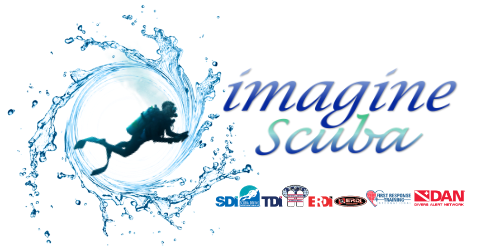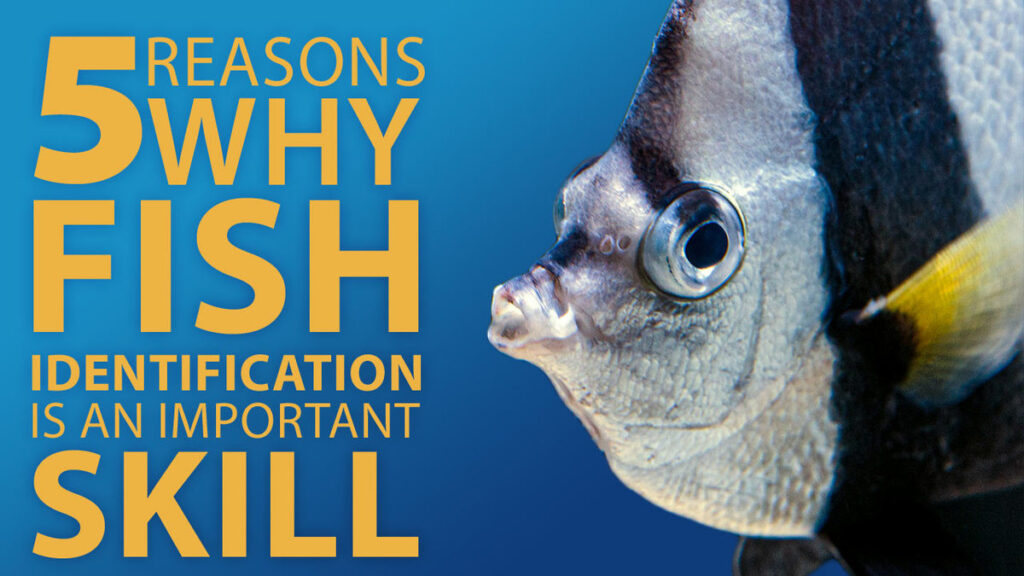WHY IS FISH IDENTIFICATION IMPORTANT?
If you surveyed 100 recreational divers about the top ten most important skills for a diver, I don’t think fish identification would garner many votes. True, finning techniques or navigation may seem more important but don’t discount fish ID – it’s my favorite skill to teach as an instructor. Here are five reasons why you should put the work in to improve your fish ID skills:
1. Fish identification is low and slow
In 2009 I traveled to Manzanillo, Mexico, to become a dive professional. My first instructor there taught me to look for the small stuff. Thus, I learned to dive as close to the bottom as possible without stirring it up…I had to get close to see what I was looking for. Blennies. To do this, of course, I needed to dial in my buoyancy and trim so I didn’t come crashing down onto the reef or drag my gauges across the top. Blennies are cute, odd-shaped bottom dwellers that burrow in the seafloor or inhabit crevices on the reef or rocky substrate. You can find them poking out of their hidey holes, with their mouths agape trying to communicate that you are encroaching on their territory. To me, it looks like they are talking. Perhaps shouting out, “Hey! Did you hear about what went down at the cleaning station the other day?” I like to get close to them…almost nose-to-nose…and say hi. Some species are a mere inch in length, but all of them have an outsized personality.
Fish ID is also slow. If you power fin over the reef, you’ll miss the fish. Not only will you be going too fast to focus on them, you’ll likely startle them by disturbing the water column driving them deeper into the reef or back into their hidey holes. The slower you go the more you’ll see – you’ll be less intrusive moving through the water, and fish will be less startled by you. This also plays to your advantage if you are a photographer, because you’ll have more time to photograph your subjects.

2. Fish ID helps you develop keen observation skills
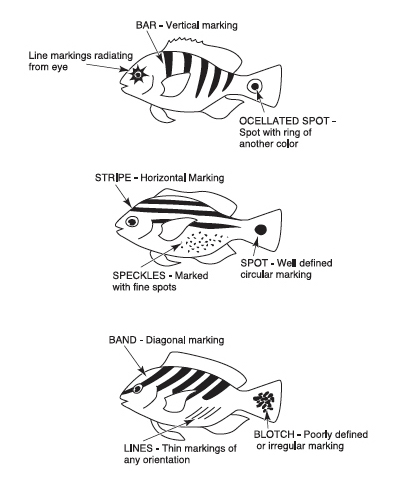
You don’t have to know the names of the fish to excel, you just have to make observations on their anatomy and distinctive features (i.e., shape, color, pattern) – being able to describe the fish you’ve seen will allow you to effectively describe them to someone else (like the dive guide) or enable you to look them up in your fish ID book. The more you practice, the more you’ll observe, all of which are clues to identifying the fish. What shape is the body…does it have a sloping head, kind of odd-looking, or round like a dinner plate? What stands out…does it have big, juicy lips, or is it primarily red in color? What did you observe about its behavior…is it free swimming or does it hug the bottom?
My old logbook entries are funny because I’d make up names for the fish I’d see – such as black and tans (bicolor damselfish) or LSU fish (fairy basslet). Or I’d write a detailed description of the fish…like the “fish that lies flat and looks like sand” (peacock flounder) or “silver ones/red on back with bulging black eyes sitting in groups of 3-4 weird” (squirrelfish).
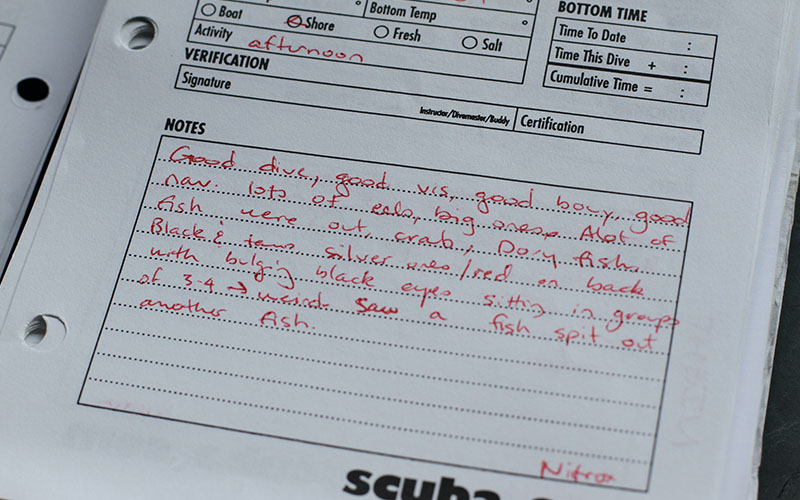
3. There’s always something new to see, if you know where to look
There’s a sign in Fife, Scotland, that reads, “Tak tent o sma things” – it translates to “pay attention to the small things.” That’s what I think after I take my giant stride, once I’ve arrived at depth and am beginning my dive. Keep your eyes open, and pay attention to the small things. What do I see? What is unfamiliar? Throughout my dive I keep my eyes peeled – looking under, behind and inside the reef – hoping to spot something new to me…some fish I’ve yet to identify. I never come out of the water disappointed.
Several years ago, I met a diver at his office where he had video footage from a recent dive trip playing. Mesmerized, I asked him about his trip and the diving. Disappointedly, he said he’d never go back there again because he didn’t see anything. “No sharks, turtles. Nothing.” As Mr. T would say, “I pity the fool.”
It’s true, most divers enjoy spotting an apex predator and singing the Jaws theme song to themselves (I’m not the only diver who does this, right?), or watching turtles glide across a reef. But to say that there was nothing to see because you didn’t see a shark or turtle is absurd. There is a seemingly endless array of small marine life to enjoy in our oceans, you just have to look for it. It helps to readjust your thinking by focusing on the abundance of the small things.
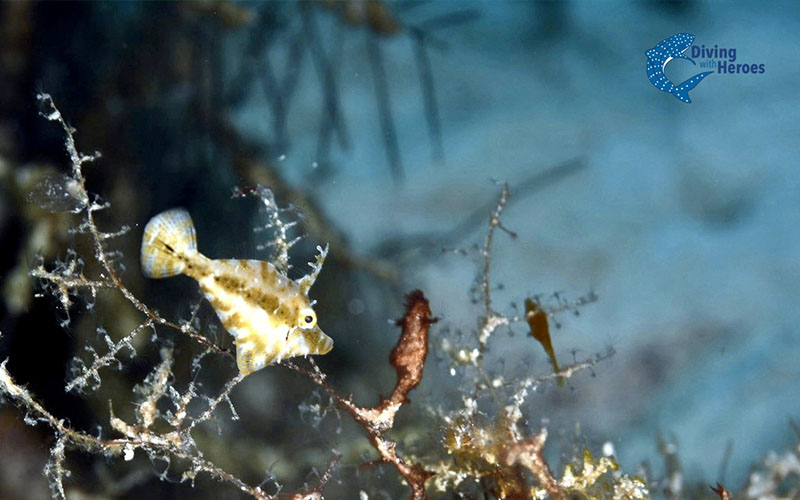
4. Fish identification is empowering
You know that feeling when you arrive to a party, walk in and start picking out all the people you know…you get the same feeling when you drop onto a reef and start identifying the fish residents. Not only recognizing them, but naming them. Or better yet, when you’re back on the boat and another diver asks, “what’s the name of that rainbow-colored fish I saw munching on coral and pooping,” and you come in clutch with the answer, “Oh, that sounds like a rainbow parrotfish.” It’s a great feeling to have an answer, and to be able to share your acquired knowledge with a fellow diver. What’s even more satisfying is being familiar with what you see underwater and feeling connected to it. This growing familiarity empowers a diver to want to see and learn more, encouraging them to seek out new underwater experiences.
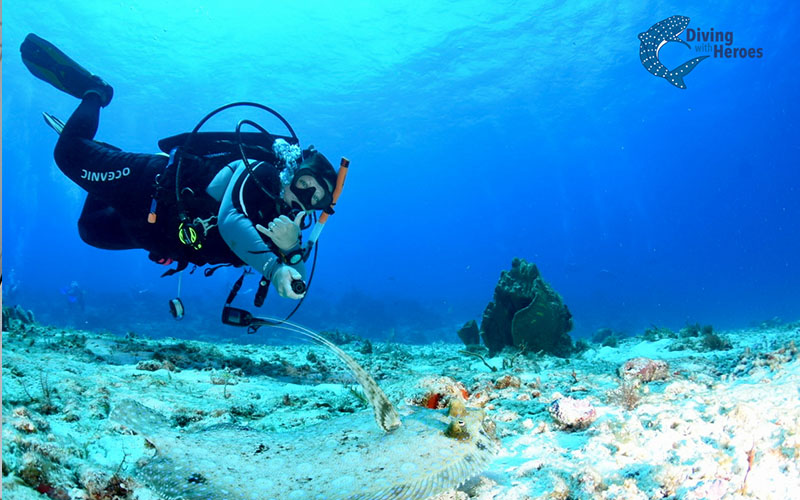
5. Fish ID is a lifelong pursuit
There are so many fish in the sea that you’ll never know them all. And even if you become an expert fish IDer in, say, the tropical Western Atlantic, you can always travel to the other side of the world and start learning the fish in the Indo-Pacific. While the classification scheme is the same across the globe, you’ll encounter different species depending on where you are. There are always new fish to see, which means you will always be on the perpetual journey of exploration.
SO, HOW DO I GET STARTED WITH FISH IDENTIFICATION?
Fish ID is something you can work on on your own – start with a good fish resource (such as these books from New World Publications) or visit Reef Environmental Education Foundation to view their variety of learning resources dedicated to building your fish ID knowledge. You can also visit your local dive shop and sign up for SDI’s Marine Ecosystems Awareness specialty course. This course will not only cover fish ID for the local area, but also builds a diver’s understanding of marine and freshwater environments, highlights the risks they face, and identifies ways divers can contribute to their conservation.
About the Author
Jill Hottel (Instructor #32568) has been diving since 2000 (that’s more than half her life!). She serves as the executive director of Diving with Heroes, a nonprofit that provides disabled veterans with opportunities to scuba dive. She is passionate about fish ID, and she shares that passion with all her divers. Her favorite fish are the whale shark, yellowhead jawfish, frogfish and (of course) blennies.
